Non Fiction Genrefication
If you have followed by blog at all or worked with me, you’ll know I have a great interest in genrefication. I started my journey with genrefication in 2017 and since then I have experimented with genrefying fiction collections and monitoring what made it work and what didn’t work so well. You can read my initial genrefication process of a young adult collection, a one year follow up here, and a review of genrefication. While I had been tweaking non fiction collections over the past few years, it wasn’t until 2020 that I got to fully genrefy my first non fiction collection.
Here is the process our library team undertook to complete this genrefication of our non fiction collection and our initial results.

The starting point
We knew our non fiction collection was tired and unloved by students. While some of the sections, 300s and 900s in particular, were curriculum focused, others that might of been high interest didn’t seems to be capturing students’ attentions. Our loan stats were low for the non fiction collection and if students were interacting with the collection it was only to pull the “naughty” books out. When students requested titles, we often didn’t have what they needed and many of the books looked and felt old. Updating the collection had been on the to-do list for a while.
Our main trigger for genrefying was actually a space thing. The non fiction currently sat at the back of our high school library teaching area. The area was open and looked over the senior study area to one side and the junior borrowing area to another. It meant that when we were holding Year 7 library lessons, for example, we had noise problems and students interacting (not always in a positive way) with seniors on study block. We needed visual and noise blocks and our best tools were the shelves.
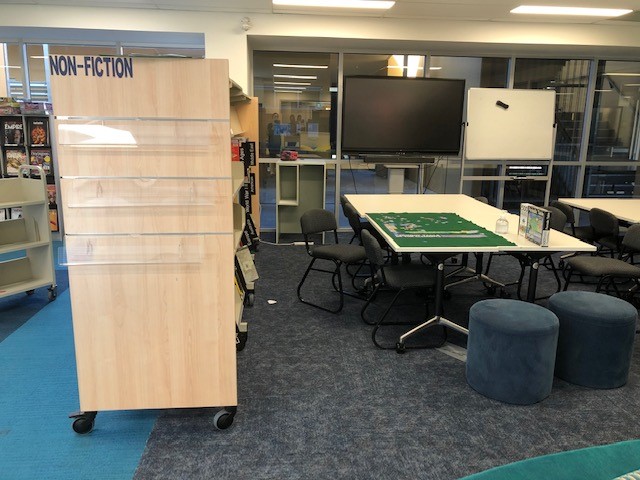
Moving the shelves
We were blessed with having shelves that were easily moveable. In a 30minute session, the library team moved the non fiction shelves around a few times until we were happy with the use of space. It created a new reading area and gave us great visual and noise blocks for our lesson area. It also gave us a new layout for the non fiction. It no longer made sense to run the non fiction from 000 to 999 as there wasn’t a logical flow to the shelves – no isles. So, we used our new layout to divide the shelves into mini collections.

Choosing the collections
We chose our non fiction collections using a mixture of what we had in the collection, what we wanted to have and what was on the shelves and in what order. For example, in our move, the 500s had remained in a block, so it made sense to call that the Science collection. It meant we didn’t need to move these books. Our main focus was on moving those smaller collections. For example, we joined the 800s with the 400s to make a Language and Literature collection. Other collections we split to highlight a new focus. We split the 900s into two collections, Geography and Travel, and History. This allowed us to expand our collection around the high interest area of travel.
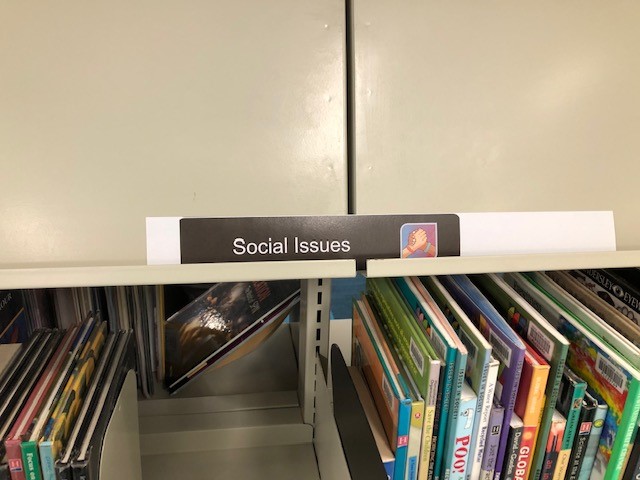
Some areas posed problems: did we make lots of smaller collections or group them together? Again we were guided by our new shelf arrangement. We had some banks of shelves and other smaller one shelf groups. We decided to use the smaller shelf areas to hold smaller collections, Technology, and used the larger bank to house a few collections, once of which we called Mind, Body and Soul. This was the term we used to house books around religions, mindfulness, health, wellness, cooking, and sport. As we expand our collection, we may choose to separate sections, such as sport, but we’ll be guided by what is being used and requested.

Moving the books
Once we had an idea of our collection we had to move the books. This also included assigning books to collections. Some were done, like the science collection and history. Others were a mash of books from all over the Dewey system. We used trolleys and pulled books, moving them to spare desks as we rotated to make space within the new collections. Some books needed discussion, but as our collection were clear it was a quick process to assign books to collections – much, much quicker than doing fiction.
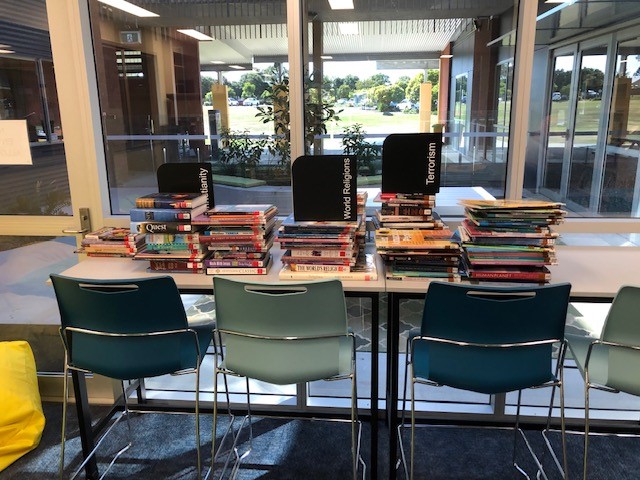
Weeding
We weeded the collection very thoroughly while we were moving the books. We weeded according to condition, age, relevancy and appeal. While our collection remained a curriculum resource, it would be far more appealing for student recreational reading and interests. Books they wouldn’t pick up had to go.

Labeling
Adding labels is always important. We ordered labels and new signs from Merchandising Libraries. We were able to chose from their range to fit our needs, collections and what we thought would appeal. The team (mainly the amazing library aide) scanned the books in each of the collections to rename them in the catalogue to sit under their new collection titles. A library volunteer then undertook the work of adding the new collection spine label. We retained the dewey numbers on each of the books and technically each of the collections runs from 000-999. Some collections have a big range (Mind, Body and Soul runs from the 200s to the 790s) while others only have a select range (Science is pretty much only the 500s).

Purchasing
Now we had our new layout and our new collections. We also had plenty of room on the shelves so we needed to add more books. We invited in a local bookseller to bring us some high interest and beautiful non fiction titles. We encouraged students to tell us what they wanted added. We added lots of new titles, as well as display areas.
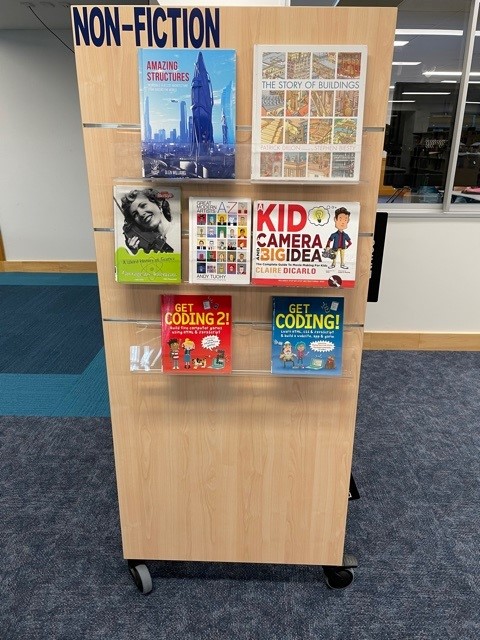
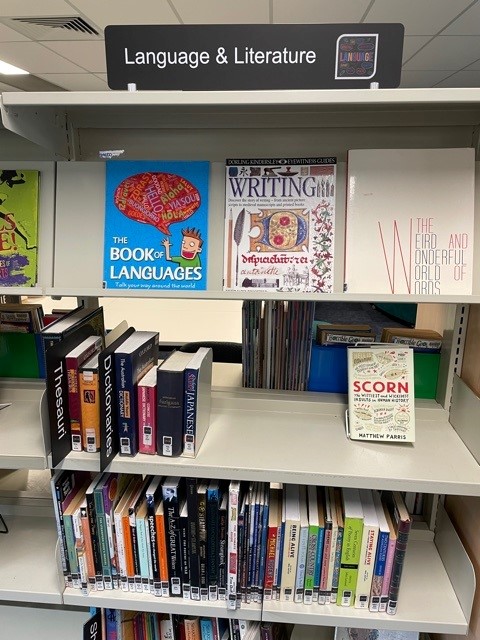
The result
At the time of writing this, it’s only been a term with students accessing our new genrefied non fiction collection. Already I can see the impact – and it is a positive one. Our loan statistics for non fiction have doubled for the first term. When we book talk non fiction to our high school classes, the books we have chosen are snapped up. The collection is being used at lunchtime. The use of the shelves as dividers for our teaching space has been extremely effective, giving us a cozy and welcoming space where we are wrapped in books. It’s engaging, but also invites the students to browse, to let their eyes wander over the shelves during our lesson. There have been other benefits, including the new reading space.
Notes
I’d like to note, we have quite a small non fiction collection, so it was pretty easy to move, re-group and re-label our books. I’ve also worked with a much larger non fiction collection in another library and used a very different technique to “genrefy”, but that’s a story for another time.

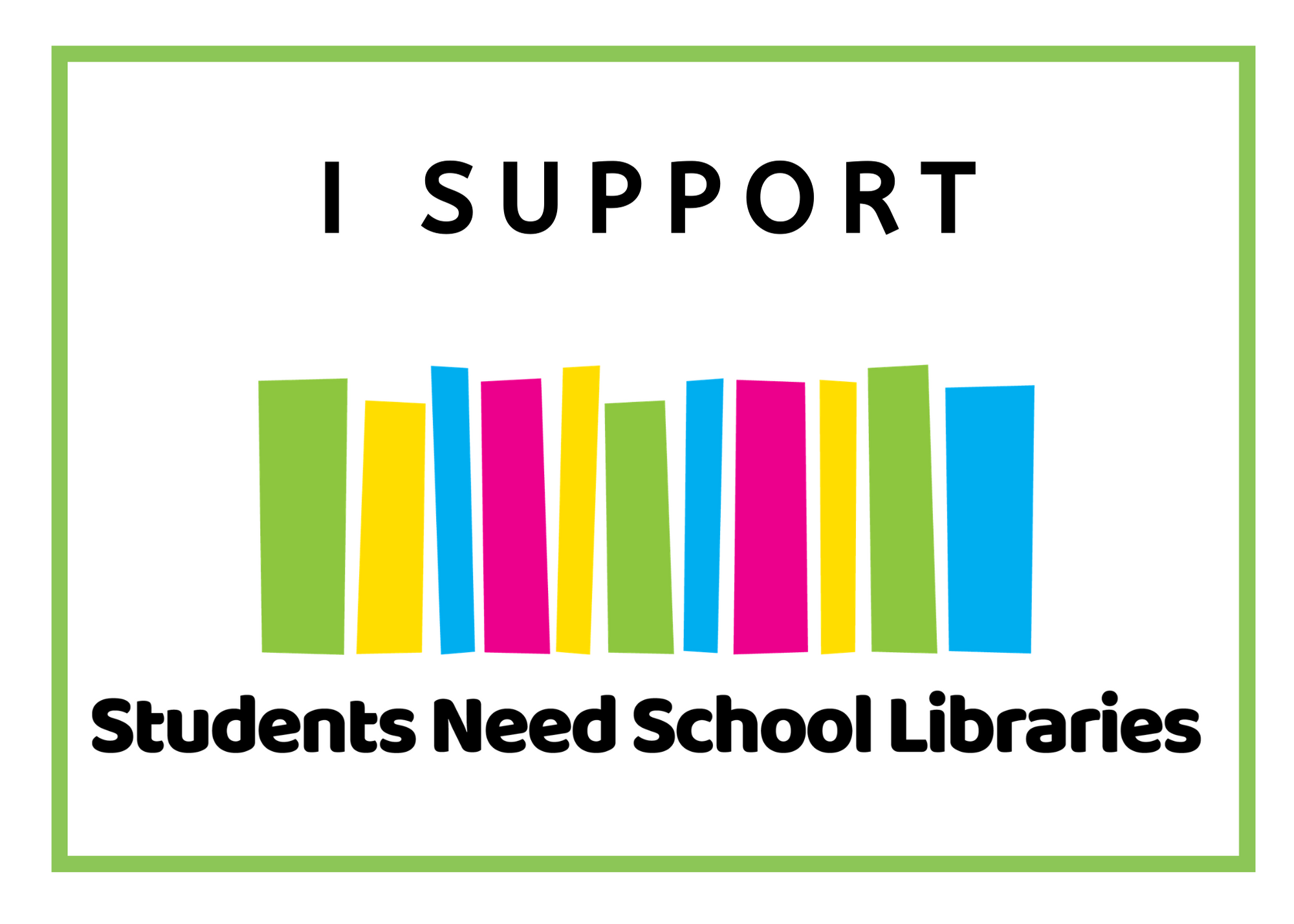

Thanks for sharing! I was wondering if you could share the name of your sections. Also, I understand you kept the DDS number on your spine labels, but did you add the initials to the category like:
SCI 500 AAA (science, 500 or so, first 3 last initials)
Thank you. I added a genre sticker above the DDC spine label. Our DDC labels read 500 AAA, no SCI at the start. At this stage I am not altering the format of those stickers. Otherwise I would probably do away with the numbers altogether and just use the collection sticker and initials of the author or book title. But that’s a big job to do later.
So far we have in our Non Fiction Collections: Animals, Creativity, Entrepreneurship, Science, Health and Fitness, Language and Literature, Travel, Planes Trains and Automobiles, Film and TV, Music, History, Did You Know?, Cooking, Gardening, Sport, Biography.
Thank you Maddison for this easy to read article. I’m considering genrifying the NF collection at my school library, this article has been helpful. How much time did it take to complete this task and how many books did you have in the collection?
Thank you for your kind words. Great question. Technically, we’ve been genrefying non-fiction for the last year and a half, but during that time I’ve also moved the school library twice, opened a new building, expanded our services and so much more. I guess what I am saying is it can take as long or as little time as you need. Take a long time and do it little bit by little bit, as I’ve done and fit it in around other things or drop other things and focus on NF to get it done. I had 4595 books in the NF collection when I started this. I now have 3984. I’ve removed a lot! And I’ve also added around 1000 new titles over the past two years. I’m not done yet, but what the students see are beautiful collections, that are easy to find and I continue to weed, sort and move the remaining collection into these collections as I have time. I hope that helps. Happy to answer more questions if you have them.